
Northern Mindanao is an administrative region in the Philippines, designated as Region X. It comprises five provinces: Bukidnon, Camiguin, Misamis Occidental, Misamis Oriental, and Lanao del Norte, and two cities classified as highly urbanized, all occupying the north-central part of Mindanao island, and the island-province of Camiguin. The regional center is Cagayan de Oro. Lanao del Norte was transferred to Northern Mindanao from Region XII by virtue of Executive Order No. 36 in September 2001.

Misamis Occidental, officially the Province of Misamis Occidental, is a province located in the region of Northern Mindanao in the Philippines. Its capital is the city of Oroquieta. The province borders Zamboanga del Norte and Zamboanga del Sur to the west and is separated from Lanao del Norte by Panguil Bay to the south and Iligan Bay to the east. The province of Misamis was originally inhabited by Subanens who were an easy target by the sea pirates from Lanao.
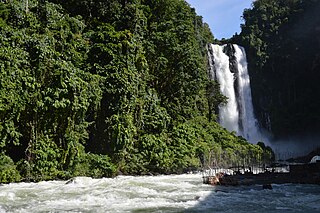
Lanao del Norte, officially the Province of Lanao del Norte, is a province in the Philippines located in the Northern Mindanao region. Its capital is Tubod.

Iligan, officially the City of Iligan, is a 1st class highly urbanized city in the region of Northern Mindanao, Philippines. According to the 2020 census, it has a population of 363,115 people.
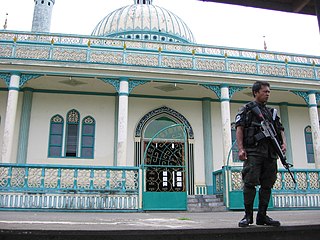
Bacolod-Kalawi, officially the Municipality of Bacolod-Kalawi, is a 3rd class municipality in the province of Lanao del Sur, Philippines. According to the 2020 census, it has a population of 23,129 people.

Masiu, officially the Municipality of Masiu, is a 5th class municipality in the province of Lanao del Sur, Philippines. According to the 2020 census, it has a population of 33,580 people.
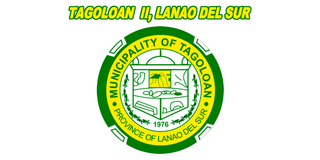
Tagoloan, officially the Municipality of Tagoloan and also known as Tagoloan II, is a 4th class municipality in the province of Lanao del Sur, Philippines. According to the 2020 census, it has a population of 12,602 people.
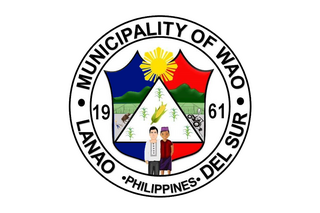
Wao officially the Municipality of Wao, is a 2nd class municipality in the province of Lanao del Sur, Philippines. According to the 2020 census, it has a population of 50,366 people. Wao is the only Christian-majority municipality of its province.

Oroquieta,(formerly/originally known as Layawan), officially the City of Oroquieta, is a 4th class component city and capital of the province of Misamis Occidental, Philippines. According to the 2020 census, it has a population of 72,301 people.
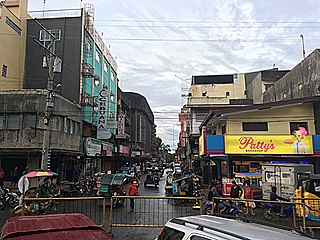
Ozamiz, officially the City of Ozamiz, is a 3rd class component city in the province of Misamis Occidental, Philippines. According to the 2020 census, it has a population of 140,334 people.

Tangub, officially the City of Tangub, is a 4th class component city in the province of Misamis Occidental, Philippines. According to the 2020 census, it has a population of 68,389 people.

Kapatagan, officially the Municipality of Kapatagan, is a 1st class municipality in the province of Lanao del Norte, Philippines. According to the 2020 census, it has a population of 62,571 people.

Kauswagan, officially the Municipality of Kauswagan, is a 5th class municipality in the province of Lanao del Norte, Philippines. According to the 2020 census, it has a population of 24,193 people.

Kolambugan, officially the Municipality of Kolambugan, is a 4th class municipality in the province of Lanao del Norte, Philippines. According to the 2020 census, it has a population of 28,265 people.

Linamon, officially the Municipality of Linamon, is a 5th class municipality in the province of Lanao del Norte, Philippines. According to the 2020 census, it has a population of 21,269 people.

Magsaysay, officially the Municipality of Magsaysay, is a 5th class municipality in the province of Lanao del Norte, Philippines. According to the 2020 census, it has a population of 20,463 people.
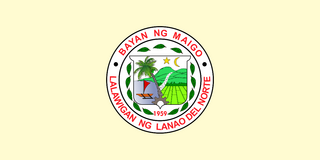
Maigo, officially the Municipality of Maigo, is a 4th class municipality in the province of Lanao del Norte, Philippines. According to the 2020 census, it has a population of 23,337 people.

Munai, officially the Municipality of Munai, is a 4th class municipality in the province of Lanao del Norte, Philippines. According to the 2020 census, it has a population of 35,020 people.

Sultan Naga Dimaporo, officially the Municipality of Sultan Naga Dimaporo, is a 5th class municipality in the province of Lanao del Norte, Philippines. According to the 2020 census, it has a population of 60,904 people. It was formerly known as Karomatan.

Tangcal, officially the Municipality of Tangcal, is a 5th class municipality in the province of Lanao del Norte, Philippines. According to the 2020 census, it has a population of 16,075 people.























